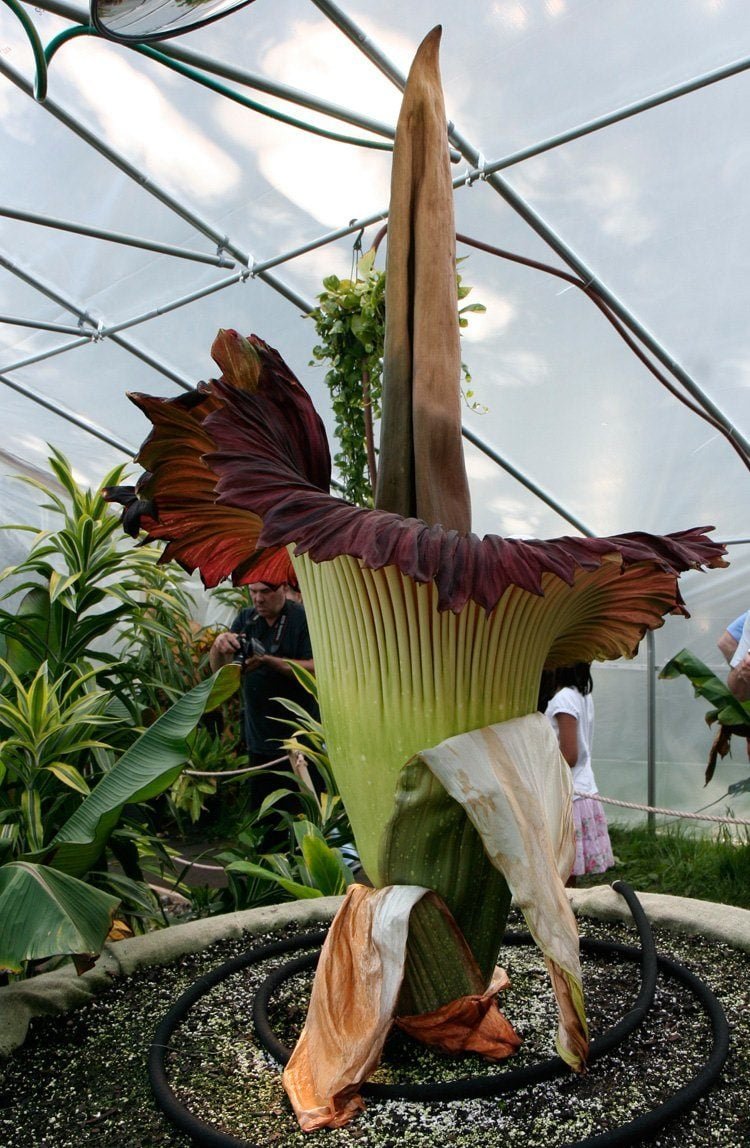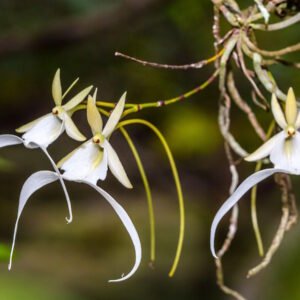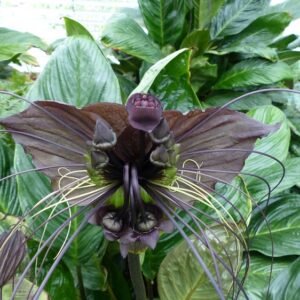Common Name: Corpse Flower
Scientific Name: Amorphophallus titanum
Family: Araceae (Arum family)
Origin: Tropical rainforests of Sumatra, Indonesia
Physical Description:
-
Bloom:
The Corpse Flower produces one of the largest and rarest inflorescences in the world. The bloom consists of:-
A tall central spadix (up to 10 feet / 3 meters tall)
-
Surrounded by a ruffled spathe (the petal-like structure), which is green on the outside and deep burgundy to purple on the inside
-
-
Odor:
When it blooms (typically every 7–10 years), it emits a powerful stench similar to rotting flesh, which attracts carrion beetles and flesh flies for pollination—hence the name “corpse flower.” -
Leaf Form (non-blooming phase):
Between blooms, the plant produces a single enormous leaf that can grow up to 20 feet tall and 16 feet wide, resembling a small tree. This leaf dies back after about a year, and the plant may go dormant. -
Tuber:
The plant grows from a massive underground corm that can weigh over 100 pounds (45 kg).
Life Cycle & Blooming:
-
Rare and unpredictable: may bloom only once every 7–10 years under cultivation.
-
The bloom lasts 24 to 48 hours, making each event a highly anticipated botanical spectacle.
Care Requirements (in cultivation):
-
Light: Prefers filtered sunlight or bright, indirect light
-
Water: Needs consistent moisture during growth, but should be allowed to dry slightly during dormancy
-
Humidity & Temperature: Thrives in hot, humid environments, similar to tropical rainforests
-
Growth Environment: Best suited for greenhouses or botanical gardens
Symbolism & Cultural Significance:
-
Symbolism: Represents rarity, mystery, and the extreme beauty of nature—often a metaphor for things that are both awe-inspiring and unsettling.
-
Public Interest: When in bloom, Corpse Flowers attract large crowds at botanical gardens due to their rarity and dramatic presentation.




Reviews
There are no reviews yet.